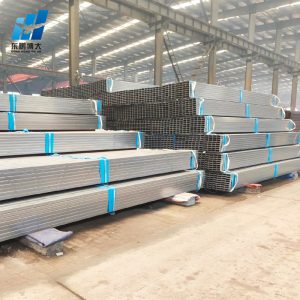Multiple factors superimposed on steel pipe prices
Steel pipes play a vital role in various industries, including construction, oil and gas, infrastructure, and manufacturing. The prices of Hot Rolled Round Steel Pipe are influenced by a multitude of factors that create a complex pricing landscape. Understanding these factors is crucial for market participants to navigate the industry and make informed decisions.

One of the primary factors impacting steel pipe prices is the cost of raw materials. Steel pipes are typically made from carbon steel, which is derived from iron ore and other alloys. Fluctuations in the prices of these raw materials, driven by global supply and demand dynamics, can directly impact the cost of producing steel pipes. For example, increases in iron ore prices due to supply constraints or high demand can lead to higher steel pipe prices.
Another significant factor is the level of demand for steel pipes. Demand is influenced by a range of factors, including infrastructure projects, construction activities, and industrial development. When demand of pre galvanized steel pipe surpasses supply, prices tend to rise as manufacturers adjust their pricing to reflect the increased market demand. Conversely, when demand slows down, prices may decline as manufacturers compete for a limited number of projects.
Government policies and regulations also play a role in steel pipe pricing. Tariffs, trade restrictions, and regulations on steel imports or exports can impact the availability and cost of steel pipes in a particular market. For instance, the imposition of import tariffs on steel pipes can lead to higher prices for imported pipes, stimulating demand for domestically produced pipes and potentially driving up their prices.
Currency exchange rates can also influence Hot dipped galvanized steel pipe price, especially in global markets. Fluctuations in currency values can affect the cost of imported raw materials, transportation expenses, and other international trading factors. For example, a weaker domestic currency can make imported steel pipes more expensive, leading to higher prices for consumers.
Additionally, energy costs, labor wages, and transportation expenses are factors that contribute to the final price of steel pipes. Energy-intensive production processes, such as melting and shaping steel, are sensitive to changes in energy prices. Higher labor wages and transportation costs can also impact the overall cost of producing and delivering steel pipes to the market.
It is important to recognize that these factors often interact and superimpose on each other, creating a complex pricing environment for Hot Dipped Galvanized Square Steel Tube. Market participants, including manufacturers, distributors, and consumers, need to closely monitor these factors and their interplay to make informed decisions regarding procurement, pricing strategies, and project planning.
Tel: +86 18202256900 Email: steel@fwssteel.com










